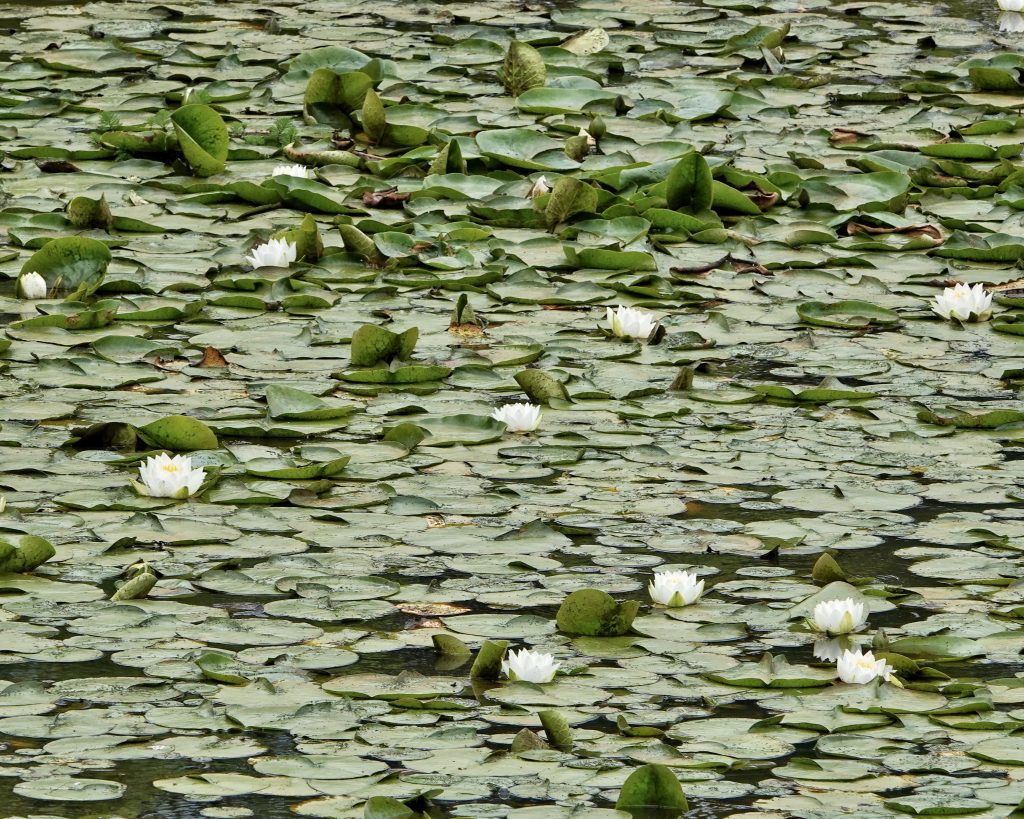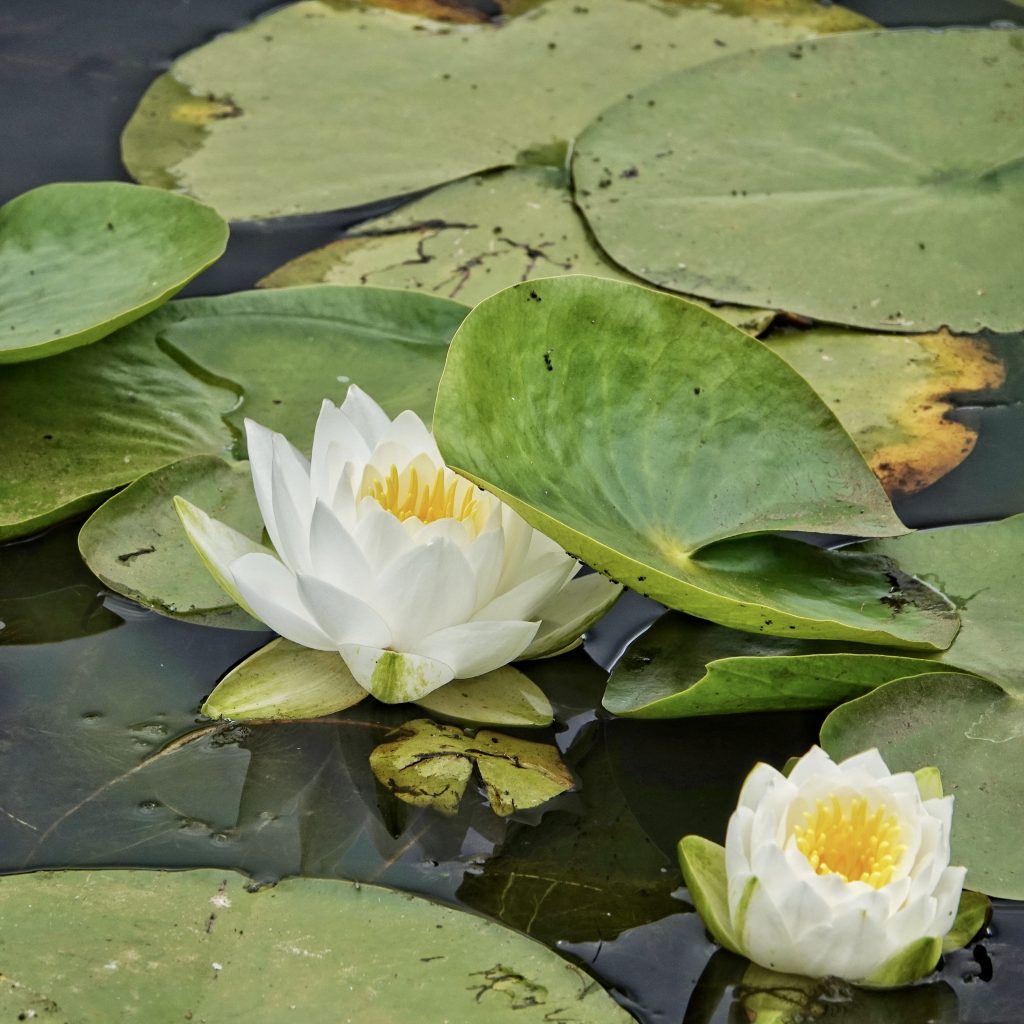
These beautiful, but non native, pond lilies in the family Nymphaeaceae (which are oddly neither a monocot nor a eudicot, having traits of both, apparently having diverged evolutionarily before either the dicots or monocots; I somehow missed this in my profile of Nuphar polysepala) go by many common names, including American white waterlily, fragrant water-lily, beaver root, fragrant white water lily, white water lily, sweet-scented white water lily, and sweet-scented water lily. This plant is on the Washington state noxious weed list, and its range is expanding in our region as it is inadvertently introduced into new bodies of water. For example the Burke Museum site, which is one of the tools I frequently use to determine the distribution of plants in Washington state, does not show it as being found in Clark, Cowlitz, or Wahkiakum counties, but I have seen it in all three.
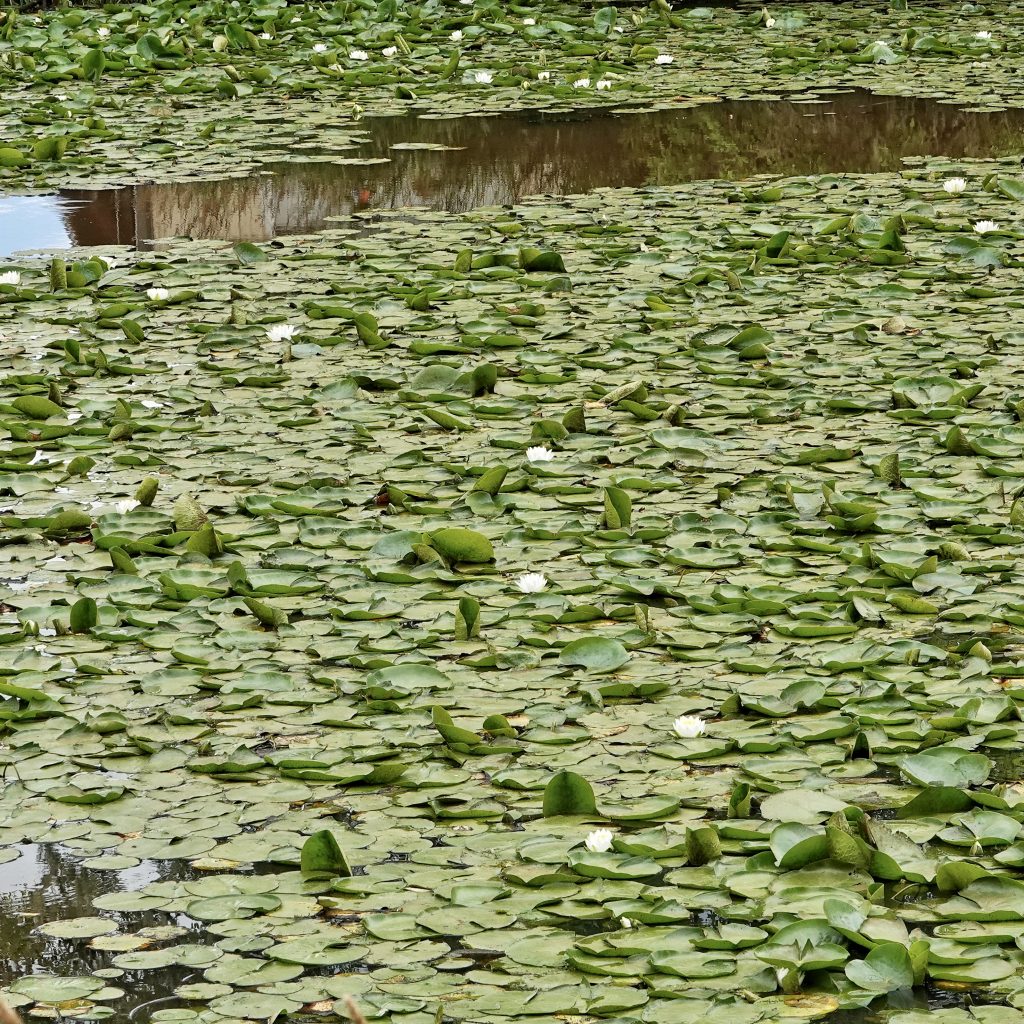
There are several reasons why this plant (which is believed to have been originally introduced into Washington during the Alaska Pacific Yukon Exposition held in Seattle in the late 1800s) is considered to be a noxious weed, most of them having to do with reduction of recreational opportunities. The environmental downside is similar to that of the native Nuphar polysepala; it creates stagnant water that isn’t wind mixed, raises the temperature of the water beneath it, adds high levels of nutrients, and uses dissolved oxygen, in the fall when it decomposes, all of which can contribute to higher levels of algal growth. And it does outcompete some native aquatic plants, although it is no threat to Nuphar polysepala. Though it is not illegal to buy or sell Nymphaea odorata in our region, and it seems to be a popular water feature plant, care should be taken not to introduce this species into wild water bodies.
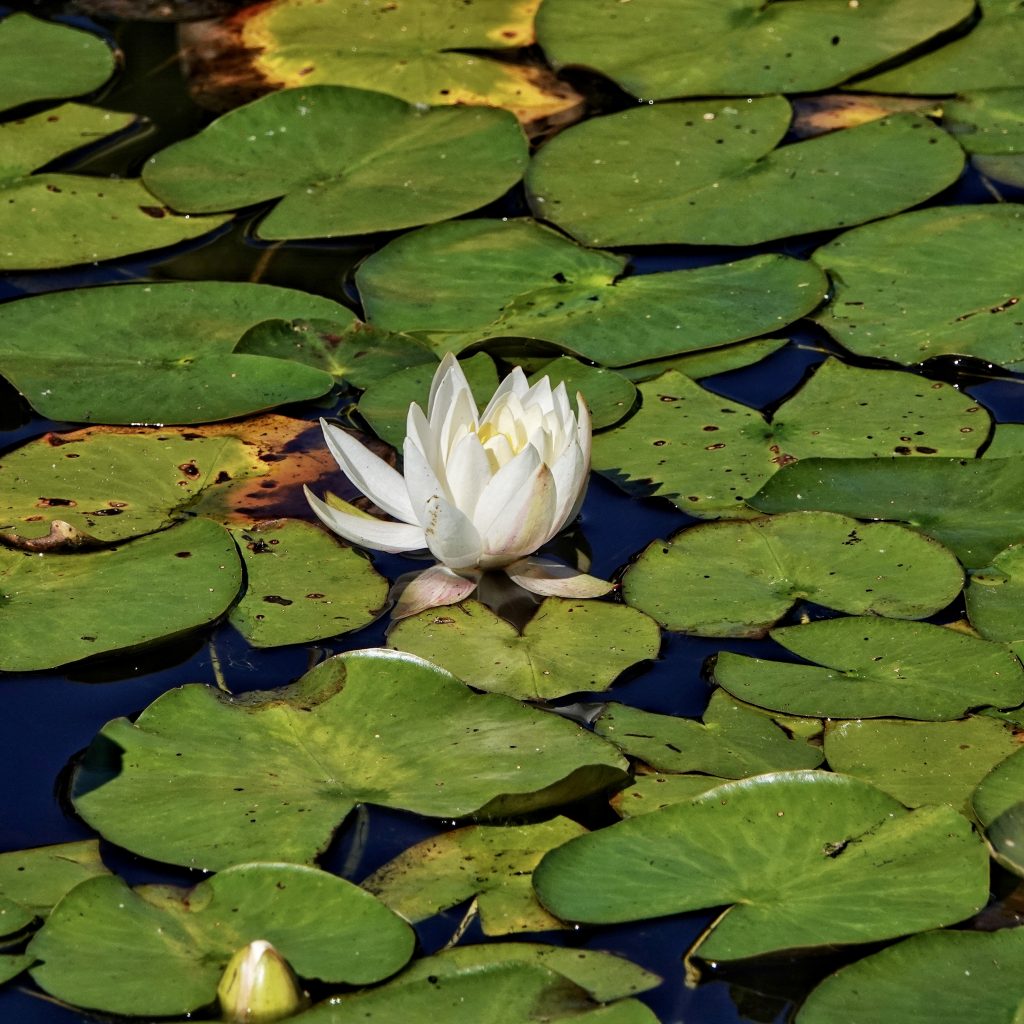
The flowers of these plants open in the morning and close in the afternoon, and only bloom for three days. On the first day only the stigmas (female parts) are mature. These stigmas secret a fluid which partially fills the bowl of the flower. When a potential pollinator (mostly sweat bees, syrphid flies, and beetles) is attracted by their odor and lands on an immature but flexible stamen, it bends under their weight and they fall into the stigmatic fluid, which washes pollen from their body. Most pollinators manage to escape, but many drown, especially if they don’t escape before the flower closes up shop for the day.
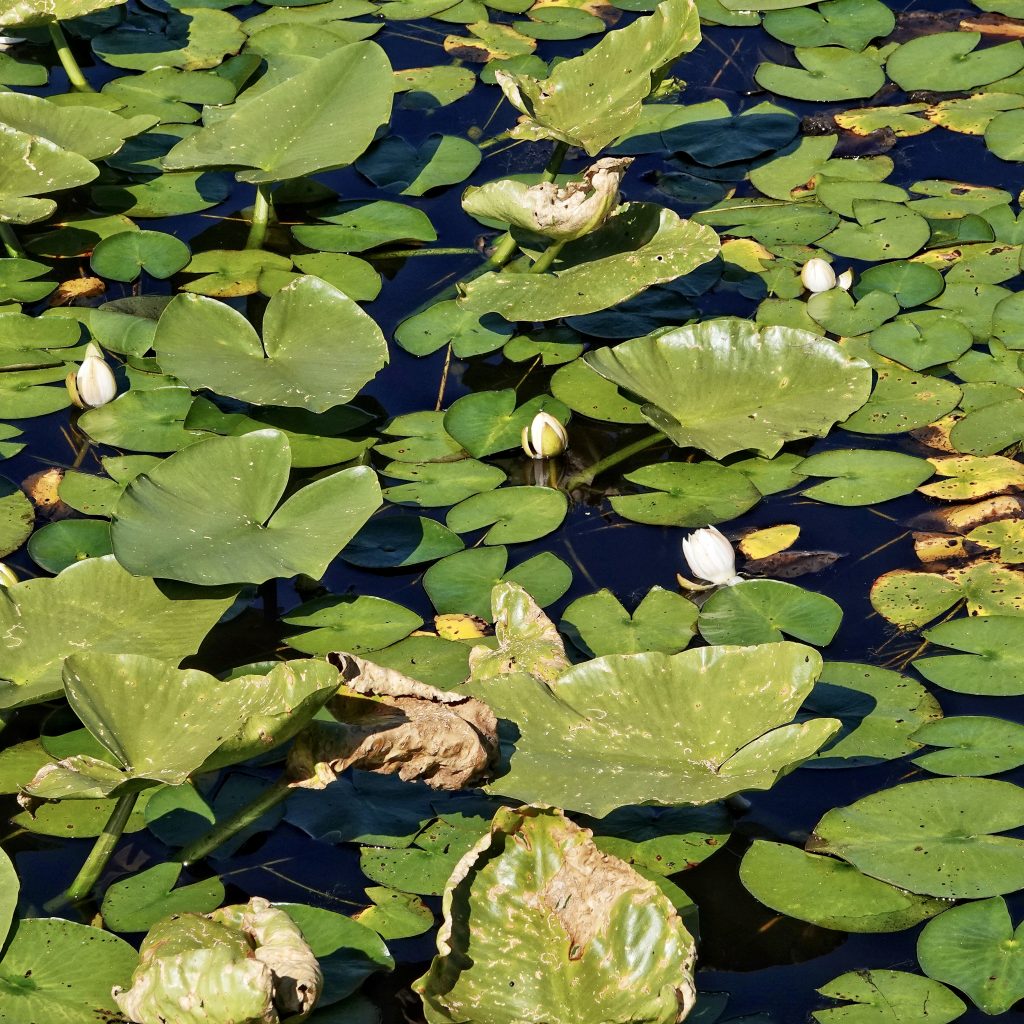
But on the second and third day the stigmas are not receptive to pollen and secrete no fluid, and the anthers open and release pollen (dehisce), thus providing genetic material to be carried to another flower. This elegant system prevents the plants from self fertilization (as determined by Schneider/Chaney; 1981, although it used to be thought that they were self fertilizing, and many sources I ran into still claim they are). After the third day the flower is drawn back beneath the surface, the flower parts fall off, and the seeds mature underwater.
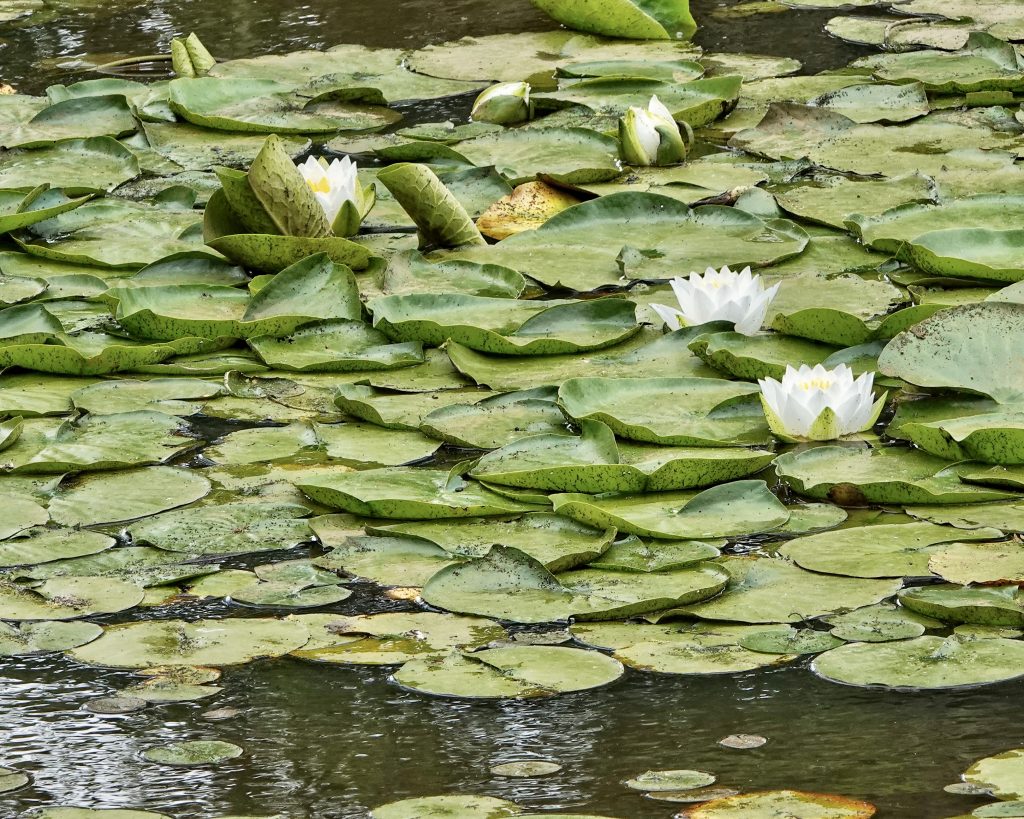
This plant was not present in our region when it was primarily populated by indigenous peoples, but those in northeastern North America had a variety of uses for it. They cooked or pickled unopened buds, and ate the flowers raw, as well as eating the leaves raw or using them in soups. They also boiled and roasted the roots, and roasted the seeds or ground them into meal. They used the roots in various ways to treat coughs and tuberculosis, and as a poultice for open wounds, and the leaves were used to treat colds and flu.
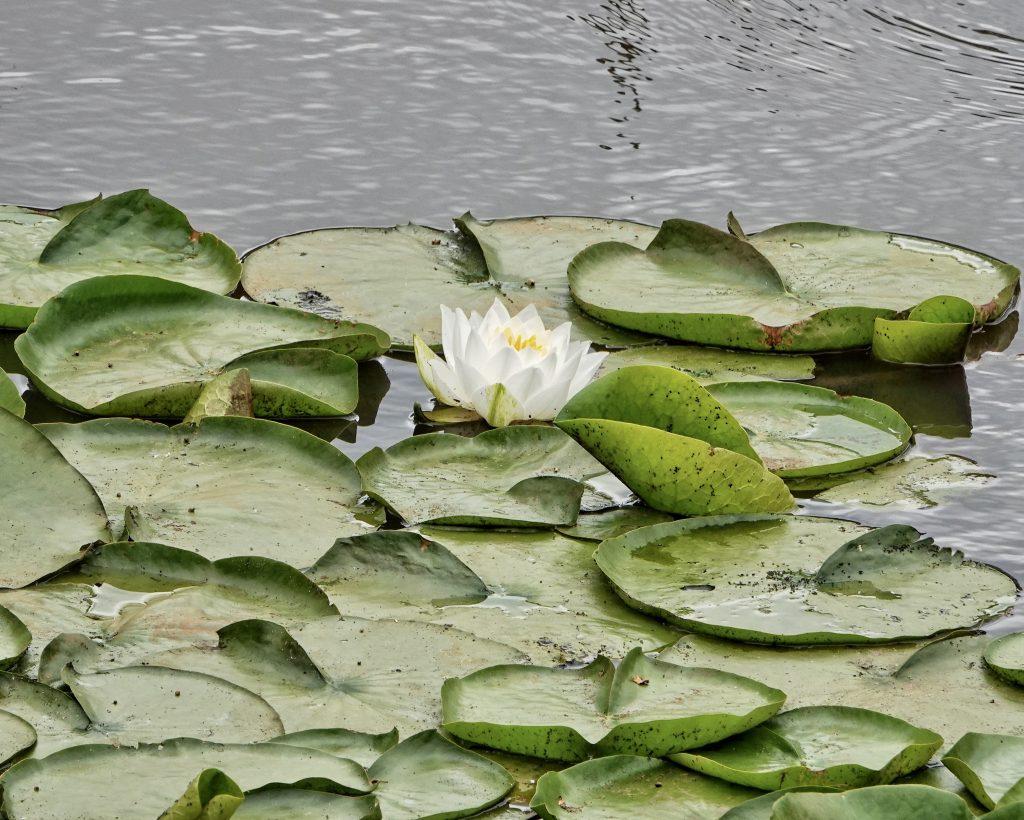
Description-Aquatic perennial with large (up to 12”) round to oval, floating leaves (although submerged in the early spring) that mostly lay flat on the surface (but curling at the edges with age) and fairly large (up to 5”) white flowers; leaves are sessile, attached centrally, with a notch leading to the stem on one side, and more or less palmate veins; flowers have at least 16 petals; 4 large, green sepals.
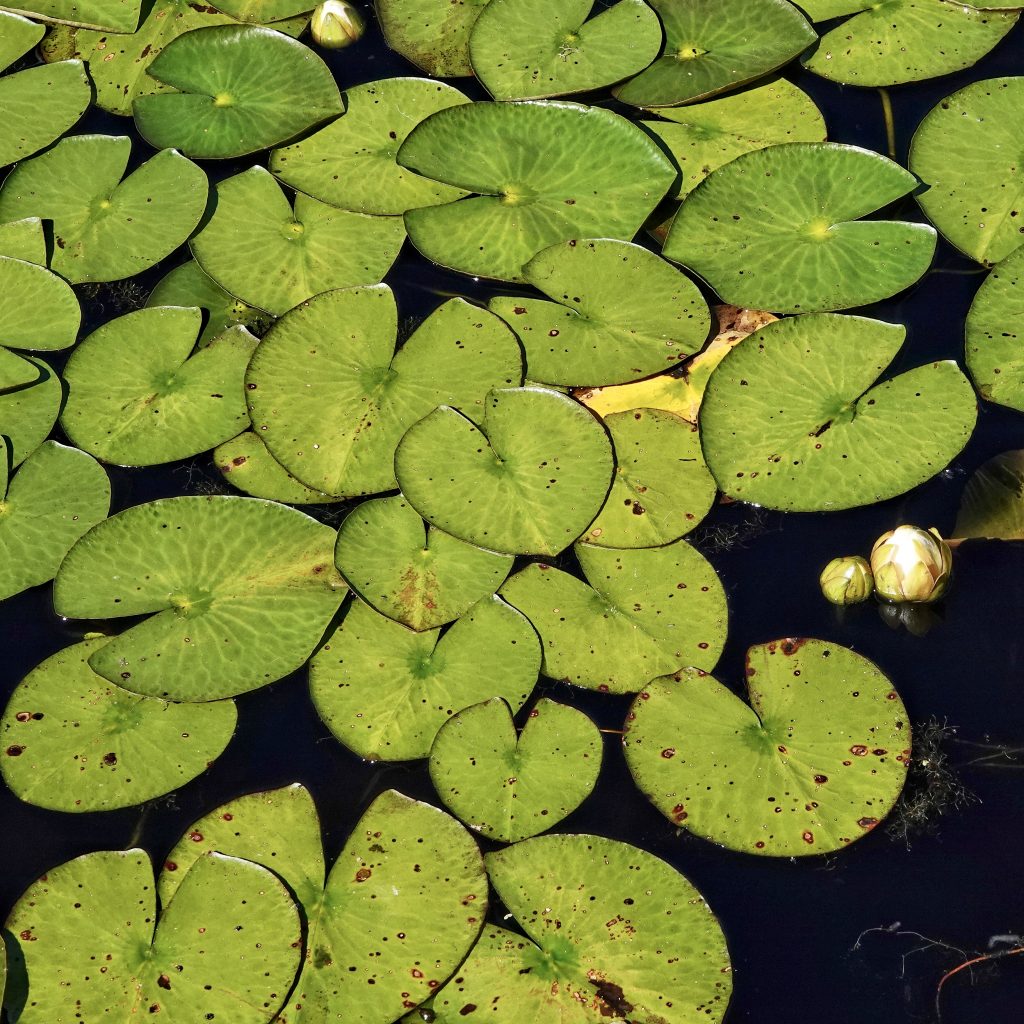
Similar species–Nuphar polysepala has much bigger leaves with opposing veins (up to 16” long), which don’t lay flat on the water and are often suspended above it, and yellow flowers; Nymphaea tetragona and N. leibergii have smaller, less round leaves, and flowers with less than 15 petals.
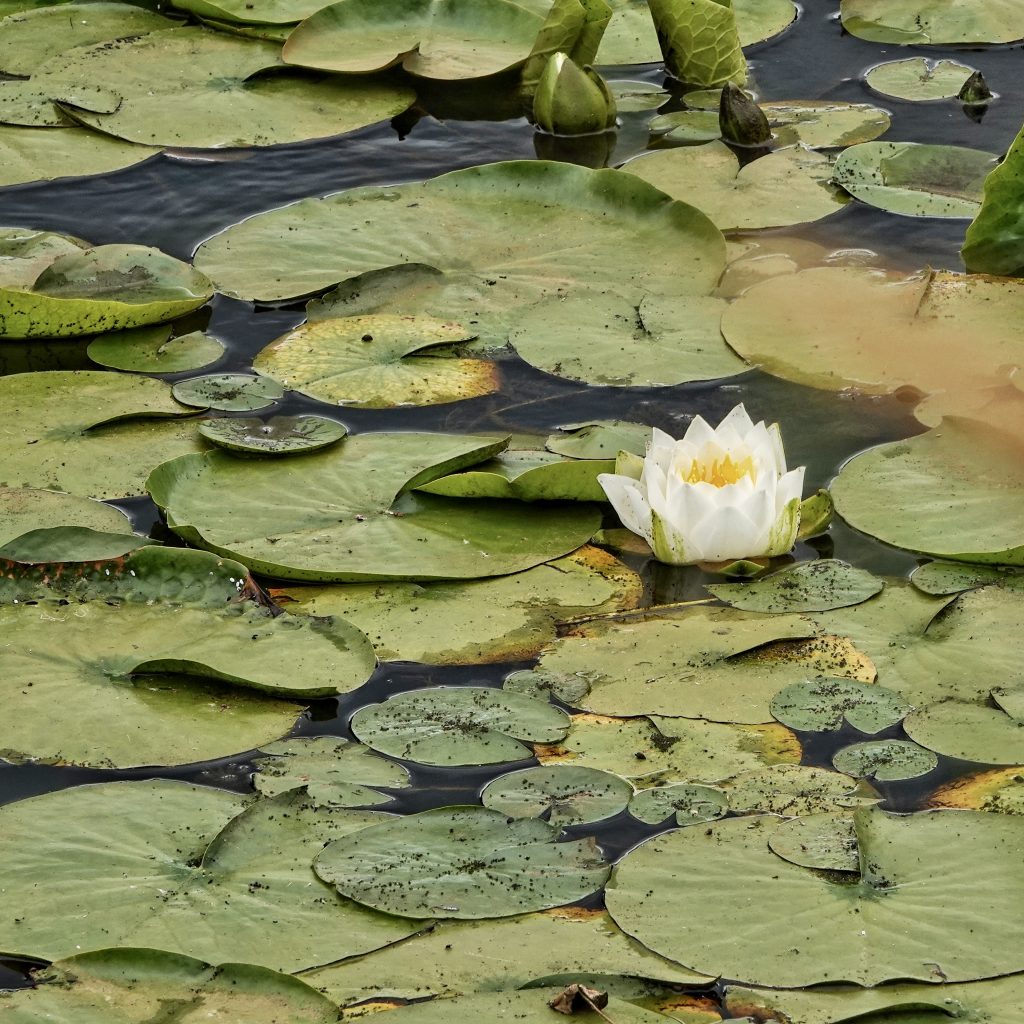
Habitat-Low elevation, shallow, lakes, ponds, sloughs and other very slow moving or still bodies of water with silty or mucky bottoms; only found in waters less than 7’ deep.
Range-Native to northeastern North America, now naturalized throughout northern North America; spottily present region wide in appropriate habitat, but more common west of the Cascades.
Reproductive timing-Flowers bloom June to October
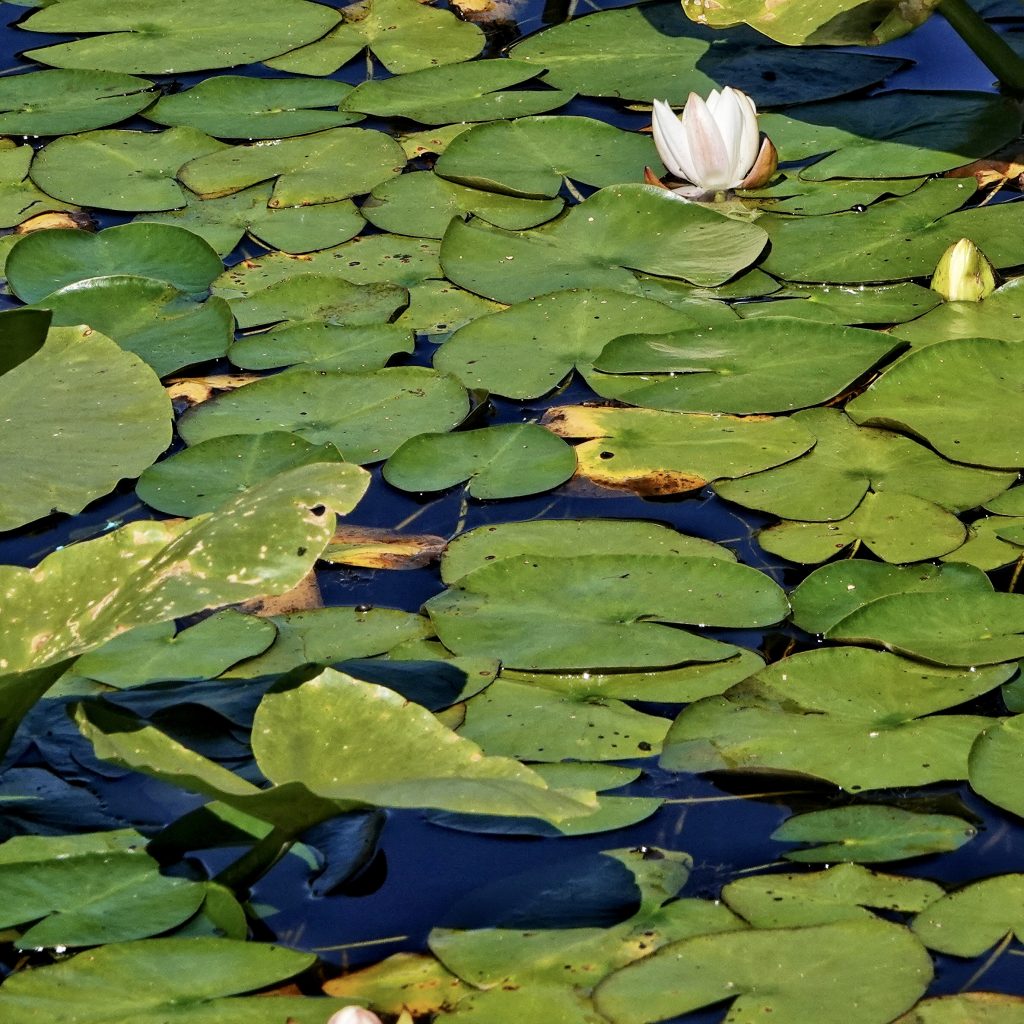
Eaten by-Muskrats, beaver, nutria, deer, moose, and porcupines are known to eat the roots, and waterfowl and other birds, as well as some aquatic rodents, are known to eat the seeds; Elophila obliteralis moths use it as a larval host; subsurface stems are bored by larvae of aquatic leaf beetles in the genus Donacia, and adults feed on the leaves; syrphid flies, beetles, and sweat bees (especially Lasioglossum) seem to be the primary pollinators
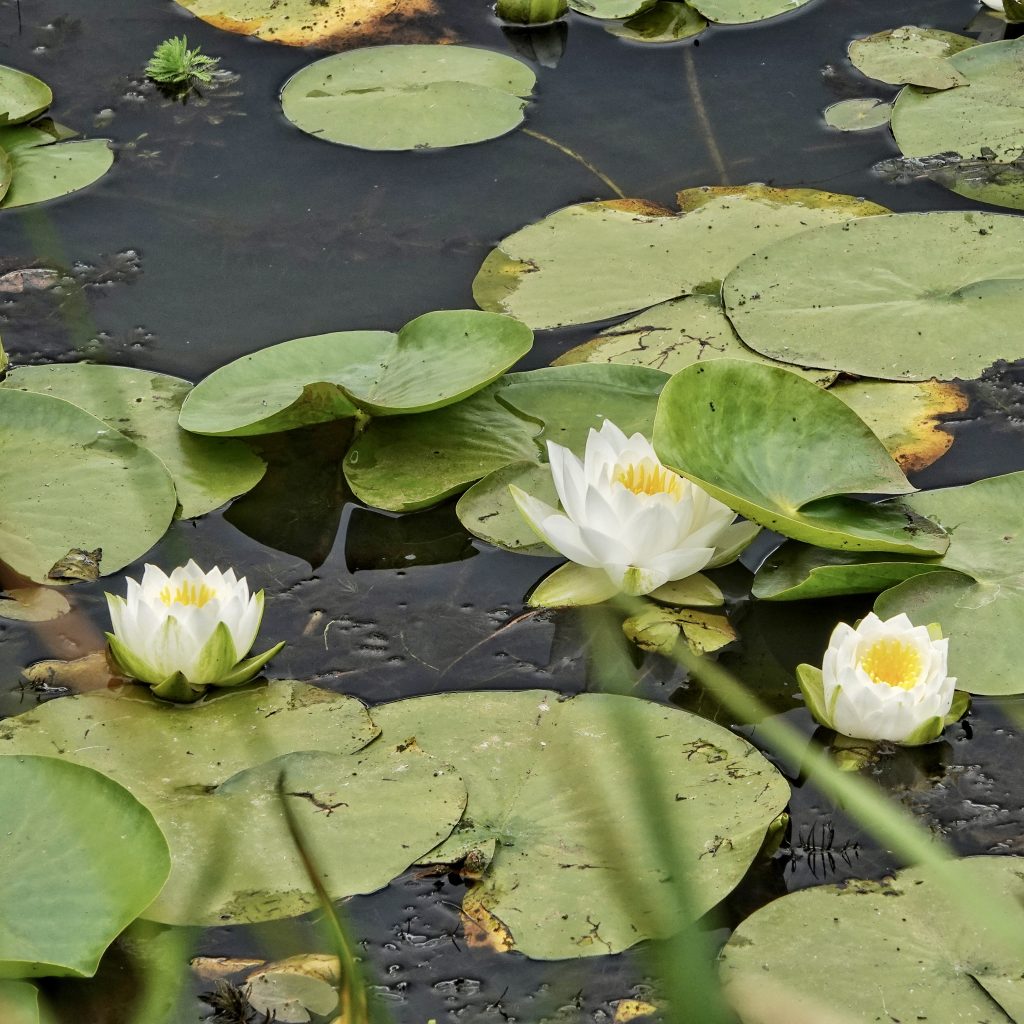
Etymology of names–Nymphaea is from the Greek word for ‘water lilies’, which in turn was derived from the Nymphe of Grecian mythology, who ruled the waters, meadows, and forests. The specific epithet odorata is from the Latin word for ‘smell’, and refers to the sweet fragrance of the flowers, although unfortunately I’ve never been close enough to one to smell it.
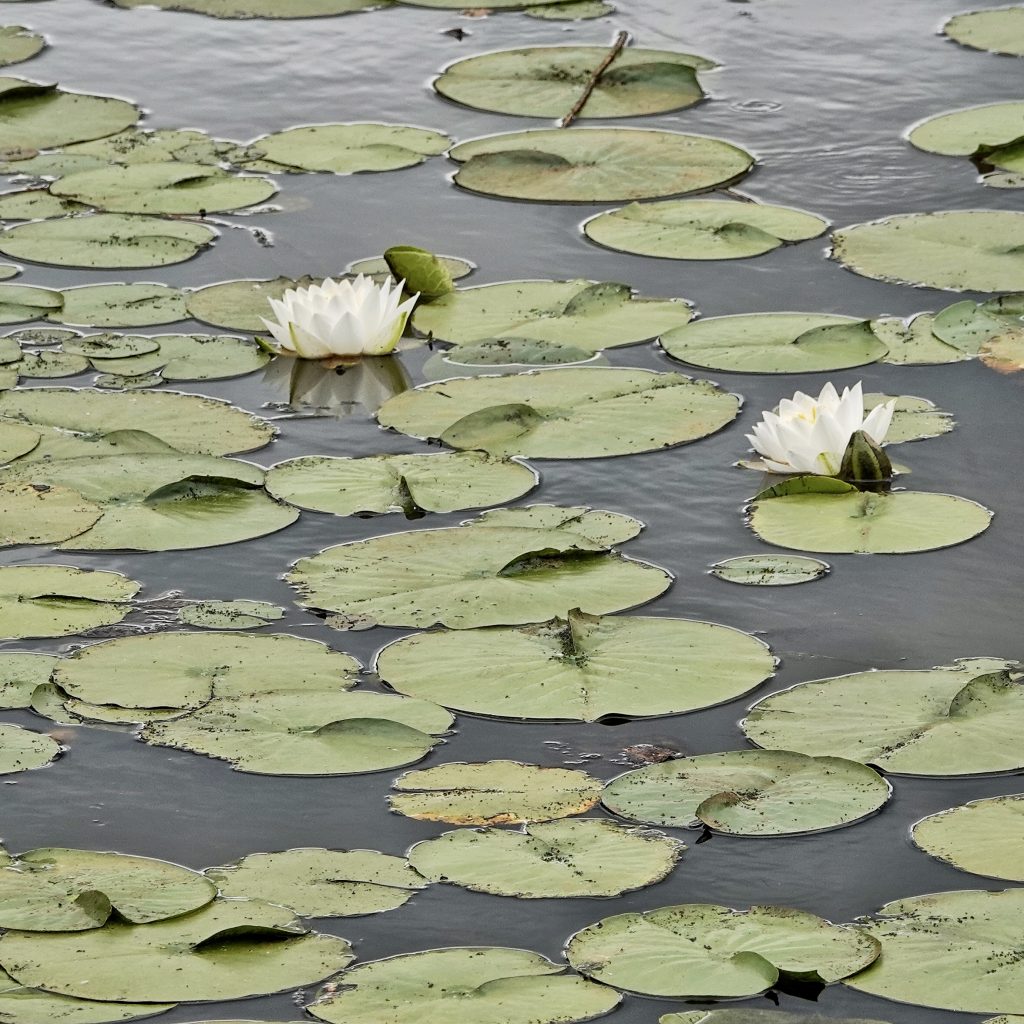
BRIT – Native American Ethnobotany Database
https://www.jstor.org/stable/3671112
https://your.kingcounty.gov/dnrp/library/water-and-land/weeds/BMPs/fragrant-water-lily-control.pdf
https://pfaf.org/user/plant.aspx?latinname=Nymphaea+odorata
Nymphaea odorata in Flora of North America @ efloras.org
Nymphaea odorata (American white water-lily) | Native Plants of North America
Burke Herbarium Image Collection
